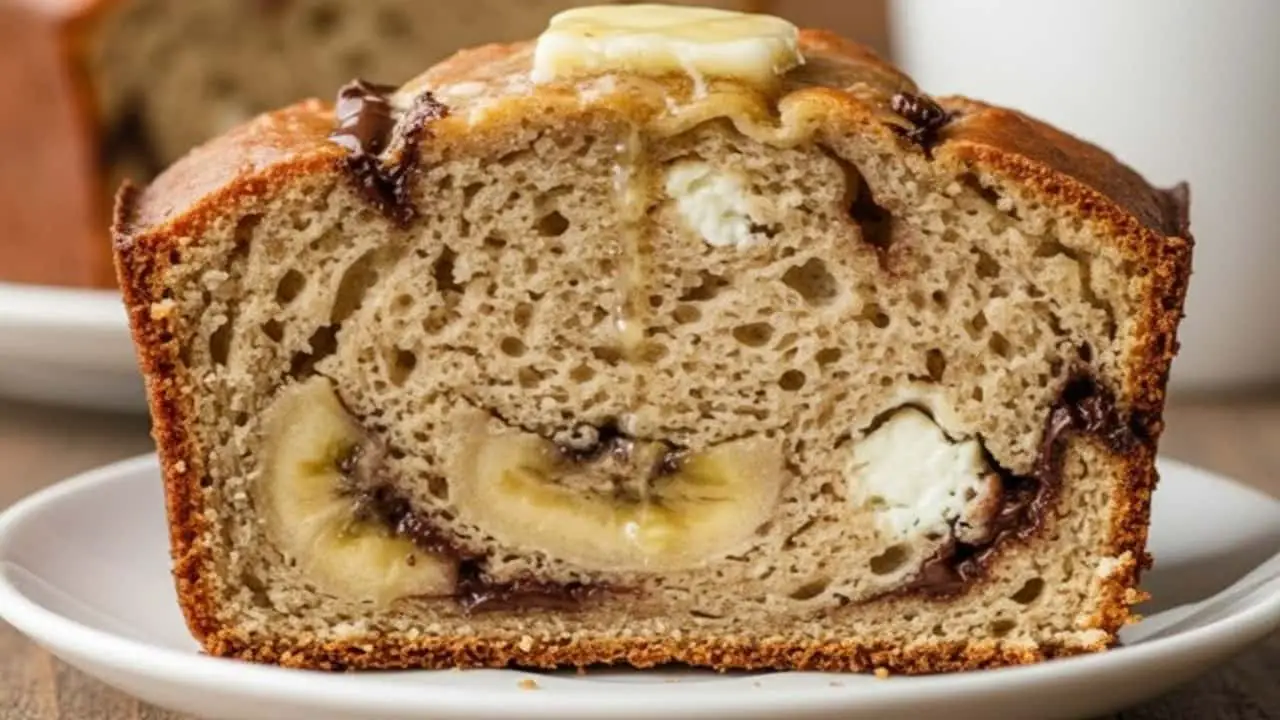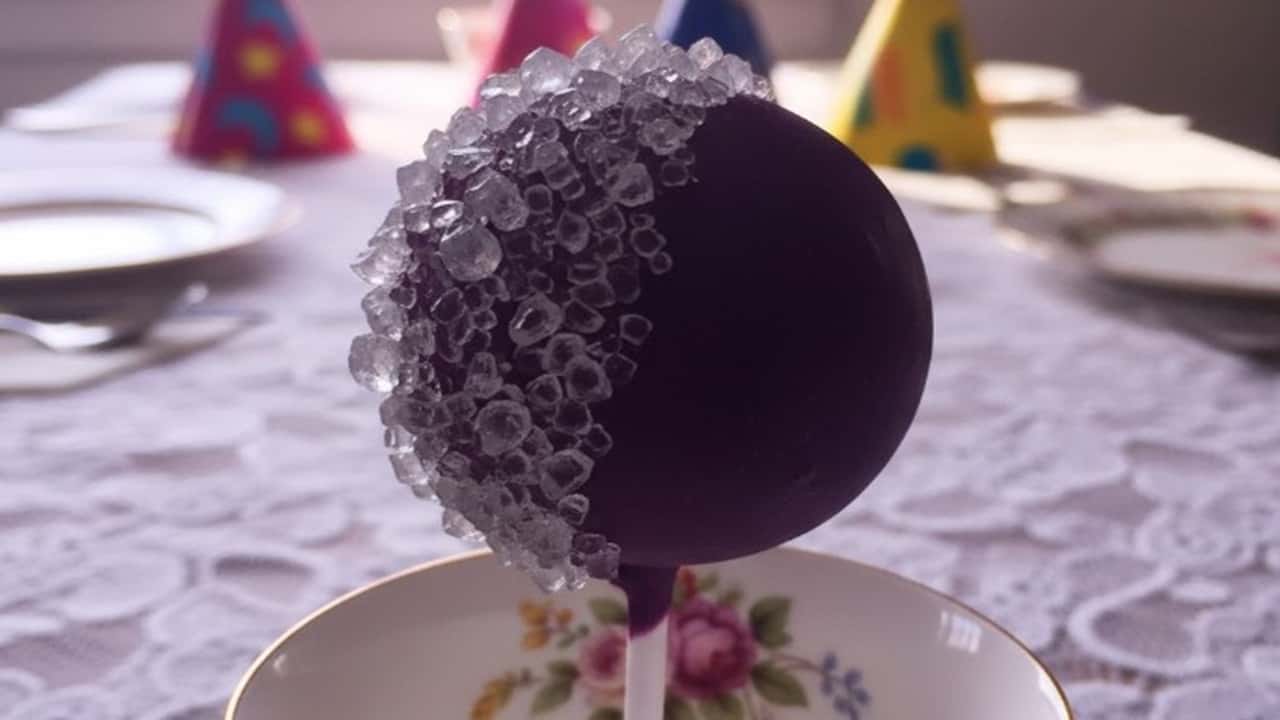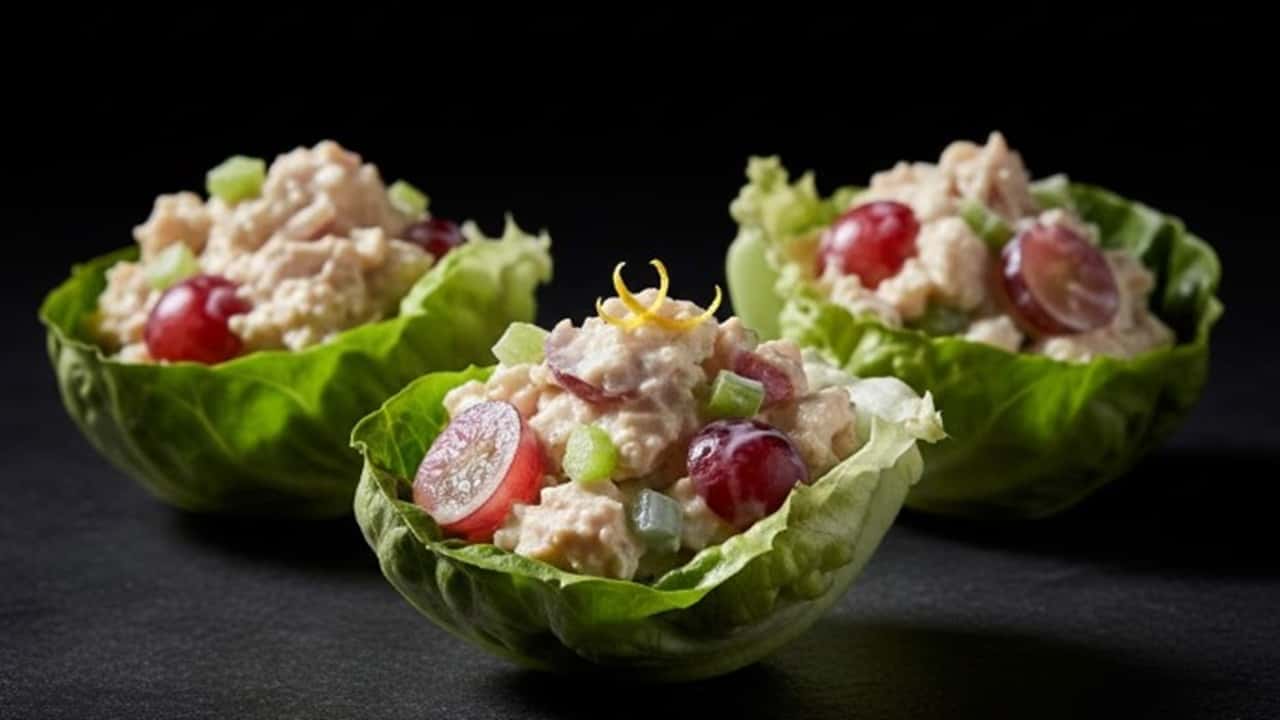There’s something about hibachi zucchini that hooks you. Maybe it’s the sizzling sound when the zucchini hits a blazing hot griddle, or that smoky, garlicky aroma that fills the air.
I used to think it was just soy sauce and butter, but after trial, error, and a few “why does this taste soggy?” moments, I found the secret.
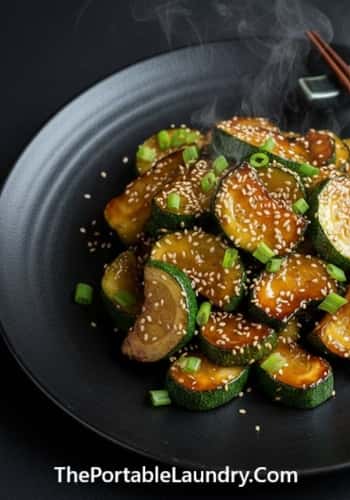
This Hibachi Zucchini Recipe is not only simple but also has a special glaze that makes it taste like the real deal you’d get at a Japanese steakhouse – maybe even better.
Ingredients Needed To Make Hibachi Zucchini Recipe
This isn’t one of those recipes that demands a hundred things. Just the basics, plus one or two flavor boosters, and you’re set.
- 2 medium zucchinis, cut into half-moons (about ¼ inch thick)
- 1 tablespoon sesame oil (for that nutty punch)
- 1 tablespoon neutral oil (canola, avocado, or peanut oil work)
- 2 cloves garlic, finely minced
- 2 tablespoons soy sauce (low-sodium preferred)
- 1 tablespoon mirin (Japanese sweet rice wine, optional but worth it)
- 1 teaspoon rice vinegar
- 1 teaspoon brown sugar (balances the savory notes)
- Pinch of chili flakes (optional, if you like a little kick)
- 1 tablespoon toasted sesame seeds (for garnish)
- 1 tablespoon scallions, thinly sliced
Yields: 3 to 4 servings as a side dish for dinner or a small appetizer/snack
Prep time: 10 minutes
Cook time: 7 minutes
Instructions To Make Hibachi Zucchini Recipe
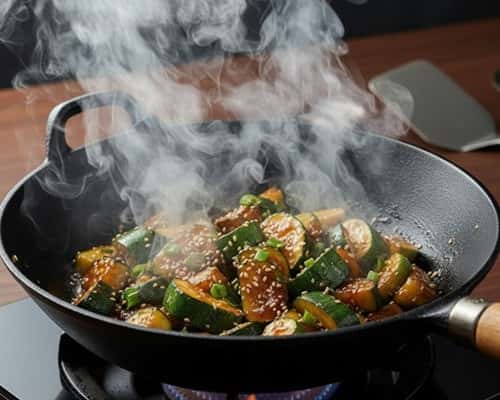
Here’s where the magic happens. Don’t rush it – hibachi cooking is about technique as much as ingredients.
Step 1: Heat That Pan Like You Mean It
Grab a wok or cast-iron skillet. Heat it over medium-high until it’s properly hot.
You want to hear that “pshhh” when the zucchini hits the pan. That’s the sear that stops soggy zucchini from ruining your day.
Step 2: Oil + Garlic First
Add sesame oil and neutral oil. Toss in the garlic and let it sizzle for about 15 to 20 seconds.
Not until it burns – just enough so your kitchen smells like you’ve walked into a Japanese teppanyaki grill.
Step 3: Zucchini In
Add the zucchini slices in a single layer if you can. Let them sit for a solid minute before you stir. This creates caramelization.
Stir-fry for 3 to 4 minutes until the zucchini is golden on the edges but still a little firm in the center. Nobody likes limp zucchini.
Step 4: The Umami Glaze
Here’s where my twist comes in. Mix soy sauce, mirin, rice vinegar, and brown sugar in a small bowl. Pour it over the zucchini.
It will bubble and coat the veggies with a shiny glaze. Stir for another 1 to 2 minutes until the sauce reduces slightly and clings beautifully.
Step 5: Finish Strong
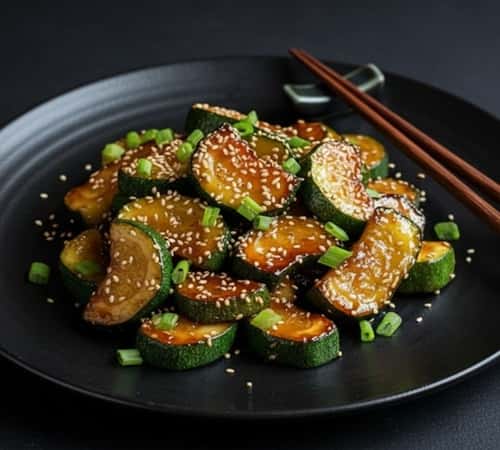
Sprinkle with sesame seeds and scallions. Toss quickly, then slide everything onto a plate. It should look glossy, smell nutty, and taste like a perfect balance of salty, sweet, and smoky.
Why This Hibachi Zucchini Recipe Works
The thing about zucchini is it’s mostly water. If you overcrowd your pan, you steam it instead of searing it.
That’s why step one – heating your pan like it owes you money – is non-negotiable.
The soy-mirin-brown sugar combo is where the “authentic yet different” flavor comes in.
Japanese steakhouses often keep their sauces simple, but adding just that touch of sweetness from mirin (or sugar if that’s what you’ve got) elevates it.
The glaze gives this dish a little more body, and it clings instead of pooling on the plate.
Tips and Tricks I’ve Learned (The Hard Way)
- Salt late, not early: Adding salt upfront draws water out of zucchini and makes it limp. Let the glaze season it at the end.
- Cut evenly: Uneven slices = uneven cooking. Stick to half-moons about ¼ inch thick.
- Work in batches if needed: If your pan isn’t wide enough, cook the zucchini in two rounds. It’s better than overcrowding.
- Swap in flavors: No mirin? Use a splash of apple juice or even a touch of honey. It’s not authentic, but it keeps the balance.
- Meal prep friendly: Reheat it quickly in a hot pan, never the microwave, or you’ll undo all that sear.
Serving Ideas

This Japanese zucchini recipe plays well with just about anything.
Here are my go-tos:
- As a side dish for dinner with grilled teriyaki chicken or salmon.
- With fried rice or noodles for a hibachi-style spread.
- As an appetizer before sushi night at home.
- Packed into a lunchbox as an easy snack – tastes good at room temperature too.
If you’re like me, you’ll find yourself making a double batch “just to snack on.”
Final Thoughts
Cooking zucchini this way changed the game for me. I used to treat it like a filler vegetable, something I’d toss in a stir-fry without much thought.
But once I figured out the balance of high heat, minimal stirring, and a simple umami glaze, it became one of those dishes my family actually asks for.
This Hibachi Zucchini Recipe isn’t just a side – it’s a reminder that with the right technique, even the most ordinary veggie can feel restaurant-worthy.
If you’ve ever felt stuck making the same old stir-fry, give this a shot. You’ll see how zucchini, when cooked with care, can hold its own as a star.


